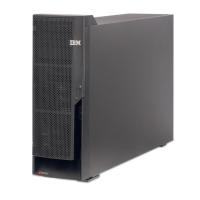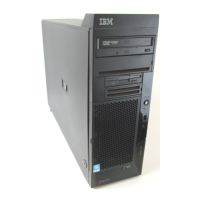5486LPOpS.fm Draft Document for Review October 18, 2004
590 IBM Eserver i5 and iSeries System Handbook
OS/400 High Availability Journal Performance (5722-SS1 Option 42)
For V5R2, there are several improvements and additions to journal management.
For the most demanding high-availability clustering environments supported by
our high availability Business Partners, Journal Standby Mode and
Asynchronous Journaling capabilities enable faster failover and reduce
performance bottlenecks. Both the Journal Caching feature and the Journal
Standby feature are provided by installing OS/400 option 42.
Journal Caching feature
The Journal Caching feature was available as PRPQ 84486 before V5R2 and is
now a standard orderable feature in V5R2. This feature allows batch applications
to substantially reduce the number of synchronous disk write operations
performed, thereby reducing overall elapsed batch execution time.
Journal Caching provides significant performance improvement for batch
applications that perform large numbers of add, update, or delete operations
against journaled objects. Applications using commitment control see less
improvement (commitment control already performs some Journal Caching).
Journal caching is especially useful for situations where journaling is being used
to enable replication to a second system.
Journal Standby feature
You may want to put a journal in standby state if the journal is on a backup
system. By having the journal in standby state, a switchover to the target system
can be accomplished more quickly because all objects on the backup system can
be journaled, therefore allowing the switchover processing to skip the costly step
of starting journaling for all objects. At the same time, the backup system does
OS/400 - High Availability Journal Performance (5722-SS1 Option 42)
Included in base No
Status Charged feature
Keyed - Yes
Related products
Further information
Important: We recommend that you do not use Journal Caching if it is
unacceptable to lose any recent change in the event of a system failure where
the contents of main memory are not preserved. This type of journaling is
directed toward batch jobs. It may not be suitable for interactive applications
where single system recovery is the primary reason for using journaling.

